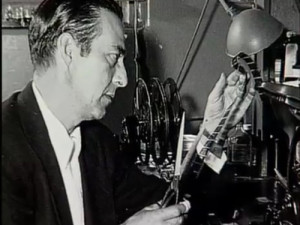
A Sound Effect Blog has a very interesting post on how to create horror sound effects.
It’s a detailed discussion from sound designer/re-recording mixer Joe Dzuban who has worked with some great horror masters of film today like James Wan and Guillermo del Toro.
While I bristle at the word “foley”- a term that’s used for movies and not really applicable for the sound effects we develop in audio drama, its great to have access to it. After all, foley is created to provide sound to coincide with footage shot with film. Audio Drama SFX are used live, as well as in post-production but created not to represent the sounds in visuals but rather to build story from the acting and the script. I’m known for not “crossing the streams” of my artistic endeavors even though I appreciate each and every form. But, if our medium matters, it’s important to give Audio Drama it’s due. You wouldn’t call the pages of your best-selling novel, “slides”, so why “foley” instead of “SFX”?
It is true that many people come to Audio Drama being visual consumers of story first, and that explains why so many think of foley as being the first term that comes to mind, but what’s more important is that we can find some crossover with the mediums, just like we do with live stage plays, comics, or audiobooks. Audio Drama is the most flexible of artistic mediums as it can wander across all others (except perhaps Miming!).
The key element is that generated sound in audio drama requires the listener to understand what the producers and writers are marking as important. While film can contrast foley against images to provide discordant tones and even moods, Audio Drama requires accuracy so that a fluency of sound creates a congruent understanding of the full setting and meaning of the story.
So, check out what tricks and tips in the above article might work well in an audio drama sound effect library, and bring your thoughts into the comments.

 For the longest time I’ve held a secret dislike for the term “Foley”. Don’t get me wrong, I think it’s a perfectly good description for someone who makes sound effects for a movie. But since radio drama and thus audio drama has been around for a lot longer than sound in movies, I think we should have our own terms. I’ve been lobbying for Farnby for sound effects digitally put together for audio drama (in honour of the amazing
For the longest time I’ve held a secret dislike for the term “Foley”. Don’t get me wrong, I think it’s a perfectly good description for someone who makes sound effects for a movie. But since radio drama and thus audio drama has been around for a lot longer than sound in movies, I think we should have our own terms. I’ve been lobbying for Farnby for sound effects digitally put together for audio drama (in honour of the amazing  Every once in a while we find an awesome article on the benefits between real sounds and Foley creation. Trento Stefano gives a clear analysis between the real and the simulated in this pdf article
Every once in a while we find an awesome article on the benefits between real sounds and Foley creation. Trento Stefano gives a clear analysis between the real and the simulated in this pdf article  Just watched
Just watched  While the art of Foley tends to be a term used for Film exclusively, those of us in audio drama have a special place in our hearts for the amazing practitioners. Sound makes and breaks movies, just like a good musical score, and no differently than the main focuses of story, acting, and cinematography. Foley tends to get overlooked and often that’s because when it’s done right, it’s so integrated in the product that you don’t even realize how amazing it makes the whole.
While the art of Foley tends to be a term used for Film exclusively, those of us in audio drama have a special place in our hearts for the amazing practitioners. Sound makes and breaks movies, just like a good musical score, and no differently than the main focuses of story, acting, and cinematography. Foley tends to get overlooked and often that’s because when it’s done right, it’s so integrated in the product that you don’t even realize how amazing it makes the whole. From
From  The genius of Carl Stalling has long been
The genius of Carl Stalling has long been 
